Abbasi House of Kashan: Photos, History, Architecture
The Abbasi House complex, situated in the magnifying cultured city of Kashan, is teemed with elegance and rich Persian history. The unique Iranian architecture and the magnetizing natural scenery of this aesthetic Persian House of Kashan will surely entice your spirit. The Abbasi House is of great value to the country. Since it has an outstanding radiance, it has been used in Iranian cinematography numerous times, from movies to popular historical television shows. It is like no other house you have ever seen. So, stay with us to learn more about the architecture and history of the renowned Abbasian House of Kashan.
Abbasi House History
You might be interested in learning about the background of this historical artistic masterpiece of Kashan; hence in reality, the construction of the Abbasi House began in 1866 and took twenty years to finalize.
The historic house museum belonged to and was built by the order of an affluent glass merchant “Haj Muhammed Ibrahim” who was a noticeable businessman during the 18th century in the city of Kashan.
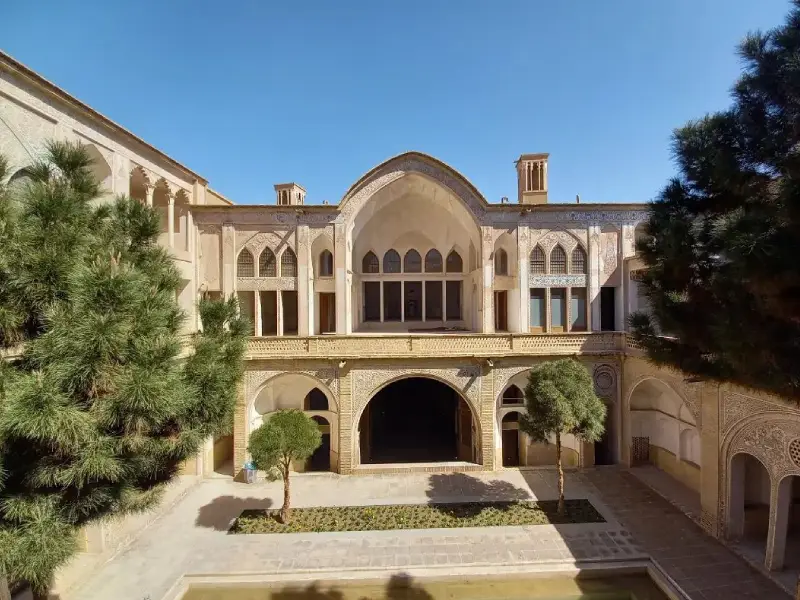
Although the identity of the architect is still unknown, he and the owner of the Abbasi house had collaborated to fabricate this picturesque structure that today it is yet regarded as a glowing gem in Kashan.
An interesting fact about the origin of the name of the Abbasi House of Kashan is that when the first owner of the house passed away, the man inheriting the complex decided to divide the place into five separate sections and sell each of these sections to different people.
Around a century ago, a man named Abbasian purchased the courtyard on the exterior side of the house and paid a fortune for it. In return, this led to a viral topic among the citizens of Kashan. With his surname spreading in the daily conversations of the people, they decided to name the house complex the Abbasian House.
Abbasi House Architecture
Why should you visit the captivating Abbasi house in Kashan City? As mentioned above, this magnificent location is like nothing you have ever seen. It was brought to existence by the hands of the brilliant mind of an Iranian architect.
The entire complex is a three-story building with an area of five thousand square meters on the second and third floors and seven thousand square meters on the ground floor.
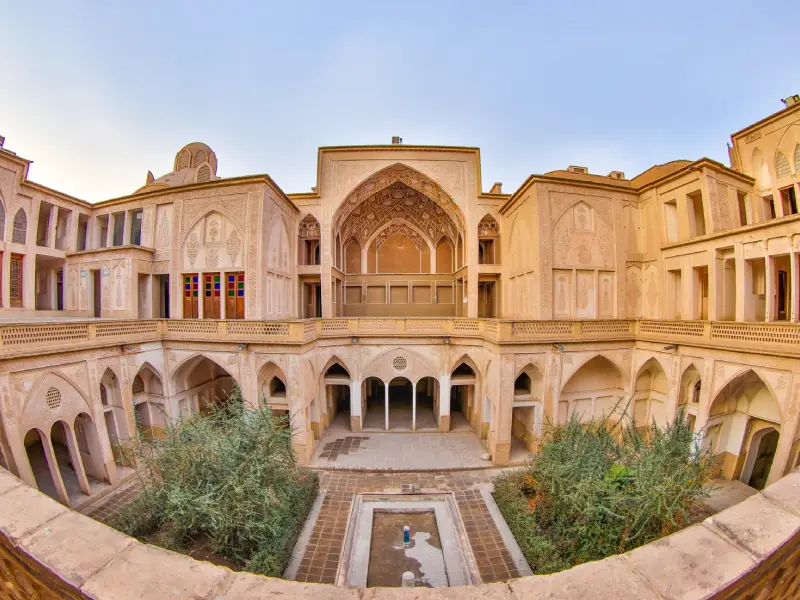
The entire structure of the house is in a sunken courtyard design. In this type of architecture, the monument is built on a lower level than the streets around it, which is why it is referred to as a sunken garden or courtyard.
Symmetry and preciseness have been highly acknowledged during the construction of the Persian house to the point that if you imagine a line in the center of each section of the house, they will be completely identical in shape and size.
The splendid interior segment of the house is comprised of introverted architecture (found in Persian architecture). That is when a building is shaped in a way where it is concealed from the outside, which maintains the privacy of the house.
Typically, introverted houses have an internal courtyard, with the houses surrounding the large pool in the center of the courtyard. Therefore, houses with such architecture are known as “courtyard houses.”
The Islamic Architecture of the Abbasian House was made in a distinctive way called “The Hijab Architecture,” which was very common during the Qajar dynasty.
The numerous and intricate rooms, the division of accommodation for both men and women and the wall covering the interior section of the house from the neighbors are some of the examples of this framework.
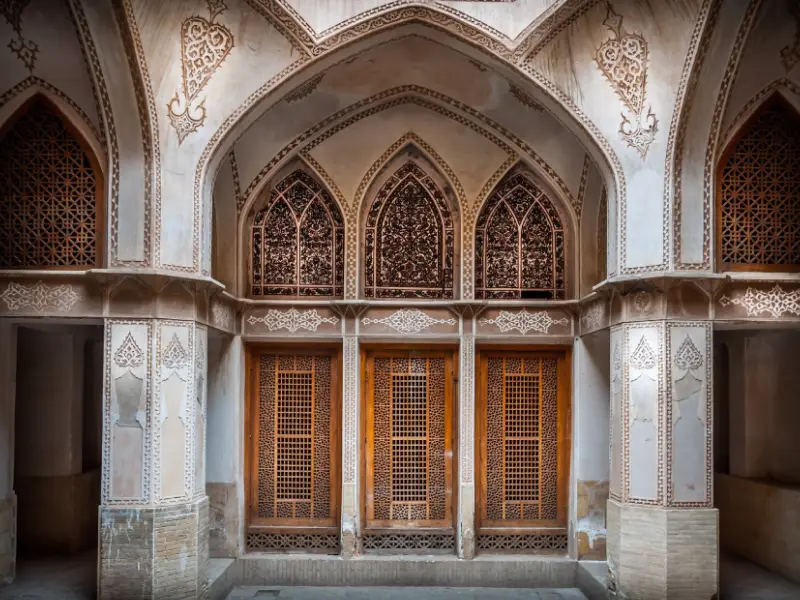
Using two different door knockers with unlike sounds (one for women and one for men) was very dominant in Persian constructions. This was used to allow the housekeeps to know about the gender of their guest.
One of the most intriguing Abbasi House features is that the house bears rooms made specifically for various climates. There are rooms suitable for both winter and summer. Thus, during these seasons, the families would have used rooms made for that particular weather condition.
Abbasi House Embellishments and Ornamentations
The Abbasian House of Kashan is extremely rich with its brilliant decorations and design. Some of these ornamentations are:
Kar Bandi
In this embellishment, narrow diagonal arches intersect with one another to form a complex geometrical form. Kar Bandi is commonly found in Persian dome architectures, which are later decorated with seven-color tile, mosaic tile, brick, etc.
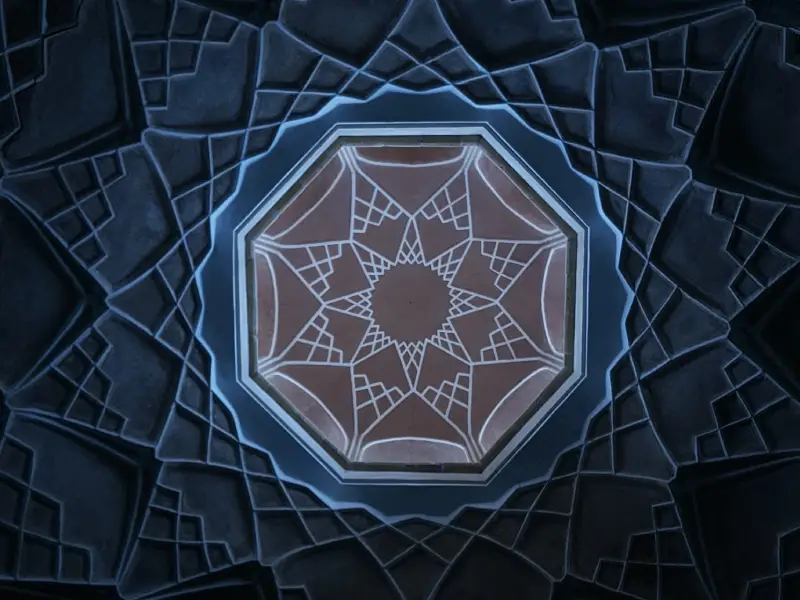
Rasmi Bandi
Rasmi Bandi is an evolved method of Kar Bandi where the geometric shape with the emerging lines will look like a pouring fountain. So, as a result, the final shape of the roof or underside of the dome will be an octagon.
Muqarnas
A form of self-supporting arched formation also known as “honeycomb vaulting”. Muqarnas are carved into the roof for decoration purposes and are purely fractal-like and incredibly sophisticated.
Areas of the Abbasi House
Here are the areas of the Abbasi House:
The entrance or Hashti
The simple façade of the entrance might fool you! However, once you step inside, the interior part of the house will surely stun you, and make you wonder about this hidden side of the historical Persian House.
At the beginning of your journey to the Abbasi House, you will come upon a waiting spot, which is in reality a vestibule (small room leading into a larger space) called “Hashti” in Persian.
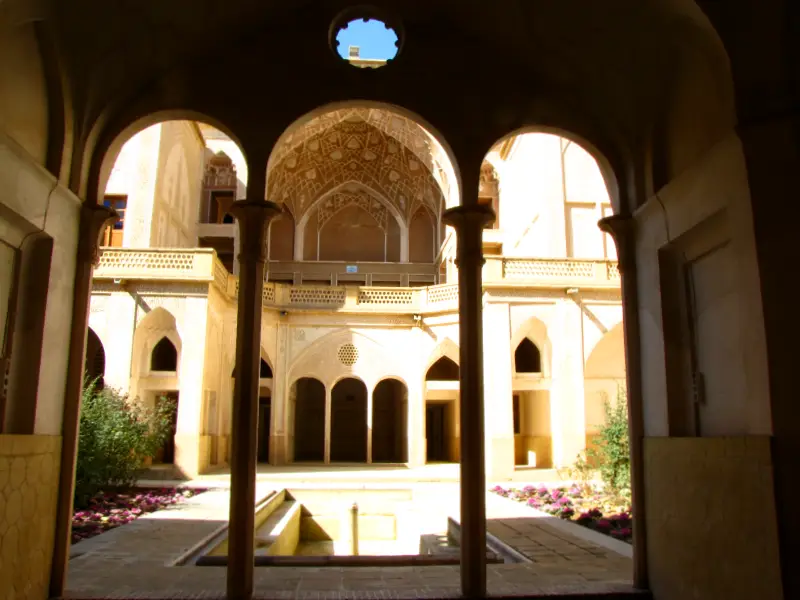
Once you enter, you will notice the ground beginning to descend since the house is built in a sunken courtyard form. Later you will approach a “Dalan” a corridor that is built in a form of a tunnel leading to the internal part of the house.
One of the reasons the house had a vestibule and a corridor was for the visitors who did not intend to enter the house and had a short conversation instead. This, in fact, maintained the privacy of the women residing in the house.
The Vestibule or Hashti with three individual doors leads to the courtyard, the first floor, and the exterior part of the house. It is worth knowing that the house has two different kinds of quarters, one for the housekeeper and another made for the settling of guests.
The Bahareh Terrace
The Bahareh terrace was used during the seasons with mild temperatures throughout the year. As we previously stated about the symmetrical architecture of the Abbasi House, the terrace is perfectly parallel. On the left side of the terrace are the quarters of the house, and on the right side is the neighbor’s domain.
The Mirror Room
The alcove, or “Shah Neshin” in Persian, which is the most luxurious part of the Abbasi House, has walls covered with stucco, Āina-kāri (the interior part of the house is decorated with finely cut mirrors in a geometric form), and colorful doors and windows.
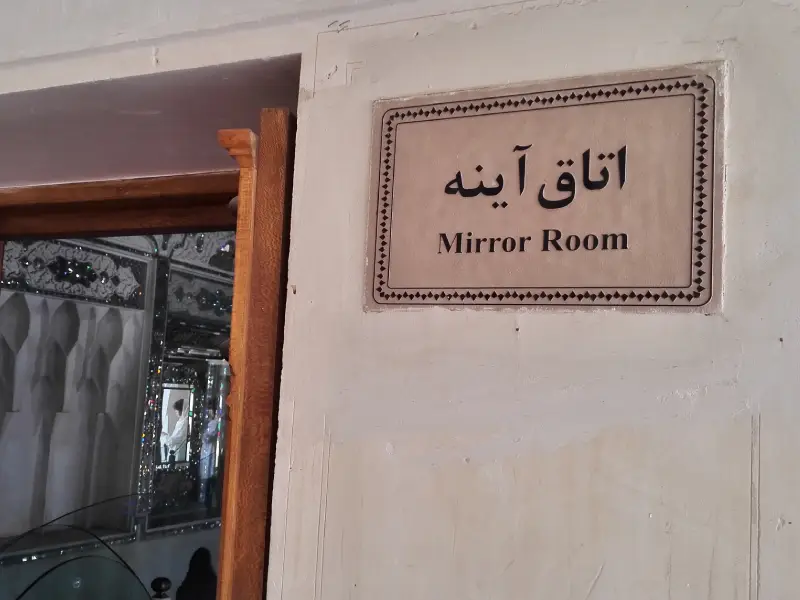
On the ceiling of this room, you will see the Āina-kāri is done in the shape of the moon and stars, as well as the sun in the center. Moreover, the room’s illumination is mostly fulfilled through the reflection of the mirrors.
Abbasi House Restaurant
Today, parts of the Abbasi House have been converted into a traditional restaurant, a teahouse, and a small gift shop.
Not only can you sightsee the precious monument with the striking Islamic architecture pertaining to centuries back but also have the chance to taste the unique Iranian cuisine or relax with a cup of hot tea while watching the enchanting courtyard of the house and listening to the birdsongs.
Other services are available in the Abbasi House complex, such as a coffee shop, an ice cream and fruit juice shop, a carpet shop, and washrooms.
Abbasi House Address
The simplest way to get through the Abbasi House of Kashan is to find Alavi Road, and from there, you can take the bus or a taxi, which will take you to the prominent Abbasi House.
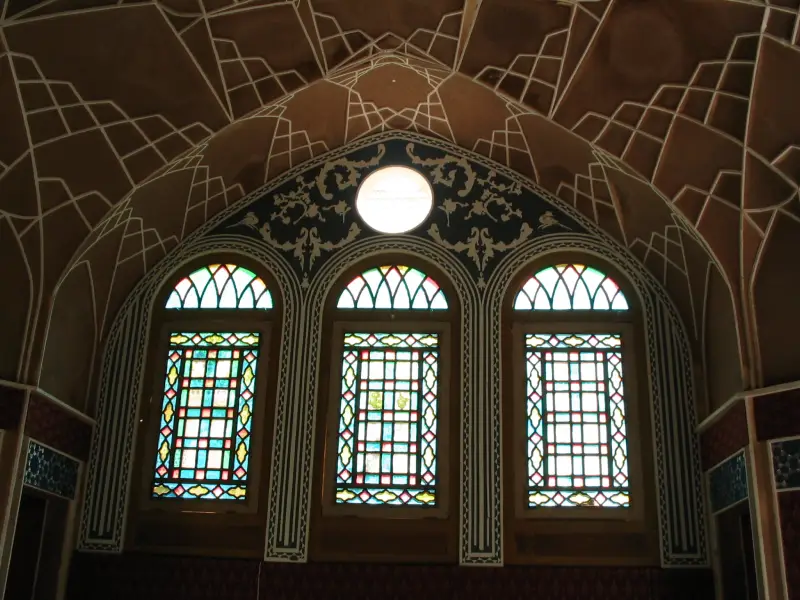
Abbasi House Visiting Hours and Entrance Fee
The Abbasian House of Kashan is open seven days a week from 9 A.M. up to 4:30 P.M. Note that, during the Nowruz holidays (The new year holidays, which is in March), the house complex is open till 8:00 P.M. For visitors with foreign citizenship, the Entrance fee is Near 1.2$.
Finally
By glimpsing at the Abbasi House photos, you will be confident that this historical house complex is truly a one of kind. The precise architecture of the Abbasian House of Kashan and its enchanting demeanor will reinvigorate your sensations. It offers you a place to experience the flavorful Persian dishes, purchase cherished souvenirs, and encounter the arresting luxury of the Abbasi House.
Are you planning to travel to Iran and looking for an Iran resort? Consider Matin abad eco resort. Maybe the things to do in Kashan are also interesting for you.

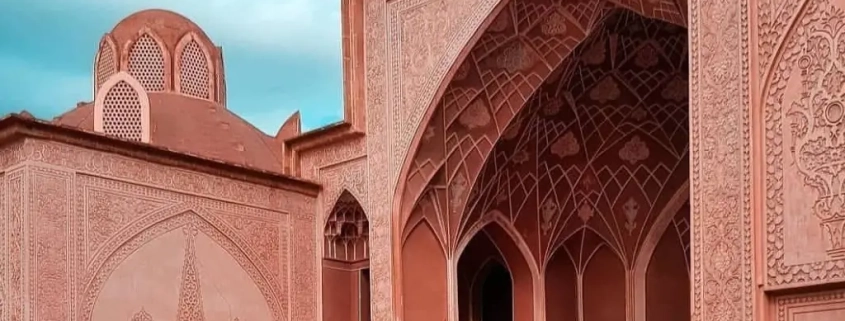



Leave a Reply
Want to join the discussion?Feel free to contribute!